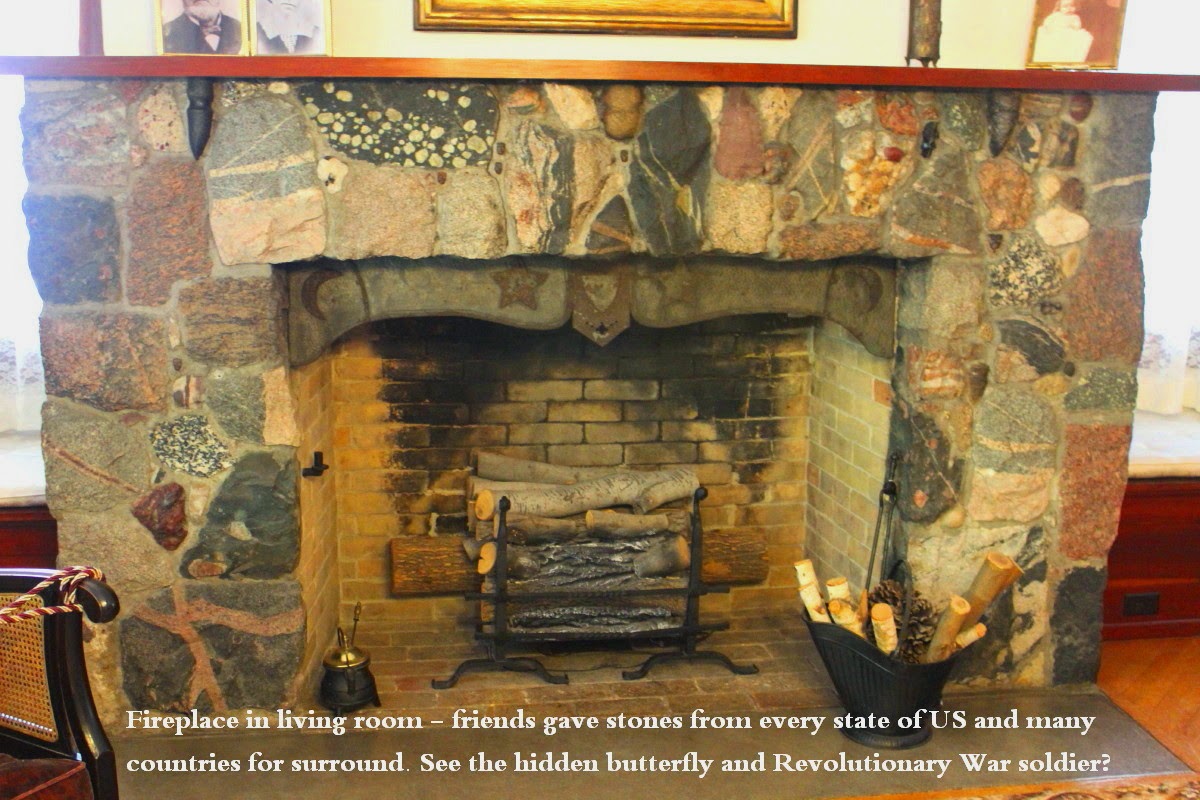Ouabache State Park is located just
south of Ft. Wayne and Oubache is the French spelling for the Native
American's we call the Wabash. We like this better than Chain O Lakes
– bathrooms are better, sites a bit easier to level in, and most
sites are spaced a bit farther apart. Still a very open park, though.
There is a 20 acre wildlife park in
which bison are the main attraction. There are generally six to eight
animals in the enclosure, but we only saw three the times we stopped
by. Bison were found grazing in the prairies of northern Indiana and
migrated to the salt licks in the wooded southern region, but by the
early 1800's, bison had vanished from Indiana.
We drove over to Geneva, about 20 miles
from camp, to the Limberlost and an early home to Gene Stratton
Porter. Gene was married to Charles, a pharmacist and they first
lived in a small home, but Charles was an astute businessman and he
invested in ventures around town, including oil wells (at its peak,
there were over 6,000 oil wells in the area). Charles grew wealthy
through his efforts and when the couple decided to have a new home
built on their property, Gene planned it out herself. They visited a
building exhibit hosted, I believe, by the Forestry Department and
took some ideas back with them and used them in their new home. One
of those ideas was to use tree trunks (sans bark) as pillars
on the front porch. She had a conservatory on the side of the home
and her well thought-out plan included a concrete floor instead of
oak, as in the balance of the home, with drains around the outside
wall to keep any spilled water at a minimum. The dining room opened
into the conservatory through two glass-paned pocket doors which let
in light and a beautiful view. Heavy curtains could be pulled across
if desired, to keep light out or as insulation against cold weather.
The fence that surrounds the property
was designed by Gene and made of limestone blocks cut from a local
quarry (about the size of concrete blocks) laid out with a space
somewhat smaller than the block in between. The next row would have
blocks spanning the empty space and leaving a space between, thus
allowing the wildlife to go in and out of the yard.
One of her photographs shows a hollow
sycamore tree with a door in it which was used as a smokehouse. Once
the property was vacant, she had the tree trunk moved to the back
corner of her house where it remains today. The door hangs ajar and
the smoke stains on the inside are still visible.
The woodwork in this house, like that
of the second house, was beautiful. Much of it was quarter-sawn oak,
used to enhance the grain. The plaster walls
were decorated with lincrusta, a deeply embossed wallovering made
from a paste of linseed oil and wood flour spread onto a paper base.
Lincrusta is still in use today.
Gracing the
master bedroom, was a beautifully carved 3-piece suite of walnut
furniture, encrusted with her favorite birds – the owl.
The front porch
stretched across the front and one side of the house, and a large
picture window in her library brought the outdoors in, providing a
beautiful view of the lawn, trees, and wildlife. On the rear corner
of the house and just off the bedroom thought to belong to their
daughter Jeannette, was an elevated gazebo-like private porch which
looked out on the Limberlost.
Gene admits to
having used real people and places in her books: The conservatory is
where Freckles entered the Bird Lady's house the night of the party
when he stopped by to tell her about the Black Vulture eggs. Gene
used her home as settings in her books and, if you haven't already
guessed, the man of affairs was modeled after her husband, the man
who looked after their horses was the inspiration for Freckles, and
Gene herself was the Bird Lady.
This was another
wonderful day , and our guide at the site, Curt Burnette, naturalist,
so knowledgeable and patient with all my questions and photographs!
Next time we're in the area, I'd like to hire him for an hour-long
tour of the Limberlost.
We did drive over
to the Limberlost, which is no longer a swamp, having been drained
for farmland, but it is in the process of being reclaimed, thanks to
the hard work of the Limberlost Swamp Remembered Project. We
attempted a hike, but between the poor signage and muddy trails, we
gave up. We did walk along a trail for some distance, and the high
point was a number of tracks made by what we believe was a large
panther, from the depth of the track. There were other tracks in the
same area, which we didn't identify, but all-in-all, it was fun.
It was time for a late lunch and we had
heard good things about Berne Dining, just north of Geneva in Berne.
I don't remember what I ordered (bacon burger, I think), but I do
remember it is one of the very few times I have sent a meal back
because it was so poorly prepared. Perhaps their lunch buffet would
have been a better choice.
We had some
cleaning and straightening up to do in the truck and RV, and the
weather was good, so we didn't get out much, other than to pick up
some groceries and do a load of laundry. We did have lunch in
Bluffton while we were out at a chain called El Camino Real which had
reasonably good food. When all was said and done, it was a much
better stay in Indiana than the previous two times, when we had to
move out then move back into our RV!



























































